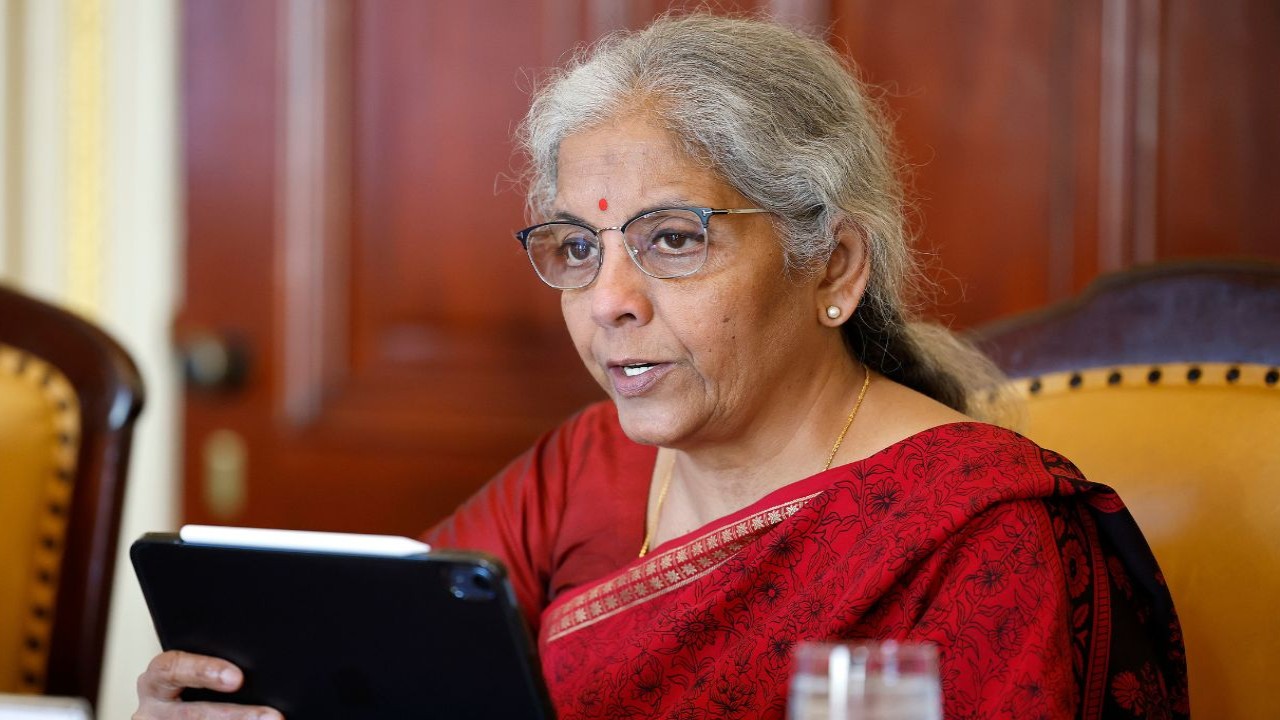Union Budget 2024: Key takeaway's from Nirmala Sitharaman's presentation; from income tax changes to financial initiatives
Finance Minister Nirmala Sitharaman presented the Union Budget for the financial year 2024-25, which focuses on job creation and increased consumption. Here are the key points from her speech.

-
Changes in the new tax regime include an increase in the standard deduction to ₹75,000 from ₹50,
-
Long-term capital gains tax rate on all assets increased to 12.5% from 10%
Finance Minister Nirmala Sitharaman revealed the Union Budget for 2024-25 on July 23, stressing job creation and boosting consumer spending, as reported by the Economic Times. Here are the main points from her speech:
Capex
In FY25, the government allocated ₹11.11 lakh crore for capital expenditure (capex), accounting for 3.4% of India’s GDP. The allocation remains unchanged from February's estimate and exceeds last year's revised estimate of ₹9.5 lakh crore. This significant investment is intended to accelerate infrastructure development and stimulate economic growth.
Income Tax
Significant changes have been announced in the new tax system. The standard deduction is proposed to increase to ₹75,000 from ₹50,000. The revised tax rate structure is shown below:
- ₹0-3 lakh: Zero
- ₹3-7 lakh: 5%
- ₹7-10 lakh: 10%
- ₹10-12 lakh: 15%
- ₹12-15 lakh: 20%
- ₹15 lakh & above: 30%
Salaried employees under the new tax regime can save up to ₹17,500 in income tax. However, no significant changes were made to personal income tax slabs, which disappointed many salaried individuals.
Capital Gains Tax
The long-term capital gains tax rate on all financial and non-financial assets will rise to 12.5% from 10%. The short-term capital gains tax will increase to 20% from 15%. The exemption limit for capital gains will be set at ₹1.25 lakh annually. This change aims to increase tax revenue while maintaining a fair tax structure.
F&O
The Securities Transaction Tax (STT) rate for Futures and Options (F&O) traders will double from 0.01% to 0.02%, raising the cost of equity and index trading. This move is expected to increase revenue, but it may have an impact on trading volumes.
Angel Tax
The government announced the repeal of the Angel Tax. This decision is expected to encourage startup investments and support the expansion of India's entrepreneurial ecosystem.
Customs Duty
Changes in customs duty include:
- The basic customs duty (BCD) on mobile phones, mobile PCDAs, and mobile chargers has been reduced to 15%.
- Customs duty on gold and silver is reduced to 6%, and platinum to 6.4%.
- BCD increased from 10% to 15% on printed circuit board assemblies for specific telecom equipment.
- Customs duties are exempt on 25 critical minerals, and the BCD is reduced for two of them.
These changes are intended to boost domestic manufacturing and make essential goods more affordable.
Employment and Skilling
A PM A package of five schemes, totaling ₹2 lakh crore, focuses on employment and improving skills. ₹1.48 lakh crore is allocated for education, employment, and improvement of skills. This initiative aims to improve the workforce's employability and meet the demands of an evolving job market.
Job Creation
The government plans to implement three schemes for employment-related incentives. New hires will receive up to ₹15,000 in direct benefit transfers (DBT) over three installments, with a monthly salary cap of ₹1 lakh. Employers will be reimbursed up to ₹3,000 per month for two years for each new employee, with the goal of supporting 50 lakh new jobs and 30 lakh youth.
A scheme will also provide internships to one crore youth over a five-year period, and rental housing for industrial workers will be facilitated through a public-private partnership. These policies are intended to create a significant number of new jobs and provide a steady income for young professionals.
Women Empowerment
Over ₹3 lakh crore will be allocated for schemes that benefit women and girls, such as hostels and women-specific skilling programs. Increasing women's workforce participation will be a top priority. This allocation promotes gender equality and empowers women in a variety of fields.
Agriculture and Rural Development
₹1.52 lakh crore will be allocated to agriculture and related sectors. A comprehensive review of agricultural research will be conducted to increase productivity and develop climate-resilient varieties. This investment is intended to improve food security and support farmers.
₹2.66 lakh crore will be set aside for rural development initiatives. For two years, an initiative will introduce one crore farmers to natural farming. These steps are intended to improve the quality of life in rural areas and promote sustainable farming practices.
Bihar and Andhra Pradesh
The budget will speed up the Bihar government's request for external assistance from multilateral development banks. Bihar will receive funding for new airports, medical facilities, sports infrastructure, and highways totaling ₹26,000 crore. This assistance aims to improve the state's infrastructure and spur economic growth.
Andhra Pradesh will receive ₹15,000 crore and additional funds in future years to support the Pollavaram irrigation project and other economic growth initiatives. This funding is intended to boost the state's economy and improve the lives of its residents.
MSME and Manufacturing
A new scheme will make it easier for MSMEs to get term loans to buy machinery and equipment without having to put up collateral. A guarantee fund of up to ₹100 crore will provide credit guarantees to MSMEs in the manufacturing sector. In addition, SIDBI will open 24 new branches to serve the MSME cluster. These measures are intended to help small businesses and increase their competitiveness.
Financial Initiatives
Mudra loans will now have a limit of ₹20 lakh, up from ₹10 lakh for those who have previously repaid their loans. This increase is intended to provide more significant support to small businesses.
The government will provide financial support for loans up to ₹10 lakh for higher education. E-vouchers will be issued directly to 1 lakh students annually, with a 3% interest subvention. This initiative seeks to make higher education more accessible to students of all backgrounds.
An integrated technology platform will be established to improve outcomes under the IBC, ensuring greater consistency, transparency, and oversight. The IBC has resolved over 1,000 companies, recovering ₹3.3 lakh crore for creditors and settling 28,000 cases worth over ₹10 lakh crore before admission. This platform is intended to streamline the insolvency process and improve creditor recovery.
The Finance Minister announced that rules and recognition for Foreign Direct Investments (FDIs) will be simplified to facilitate their inflow. This simplification aims to increase foreign investment and boost economic growth.
Budget Estimates for FY25
The fiscal deficit has been reduced to 4.9% of GDP, down from 5.1% in the interim Budget. The Finance Minister intends to achieve a fiscal deficit of less than 4.5% by FY26. Market borrowing is reduced to ₹14.01 lakh crore from ₹15.43 lakh crore in FY24. FY25 revenue is expected to be ₹32.07 lakh crore, with expenditure of ₹48.21 lakh crore.





 JOIN OUR WHATSAPP CHANNEL
JOIN OUR WHATSAPP CHANNEL






















































